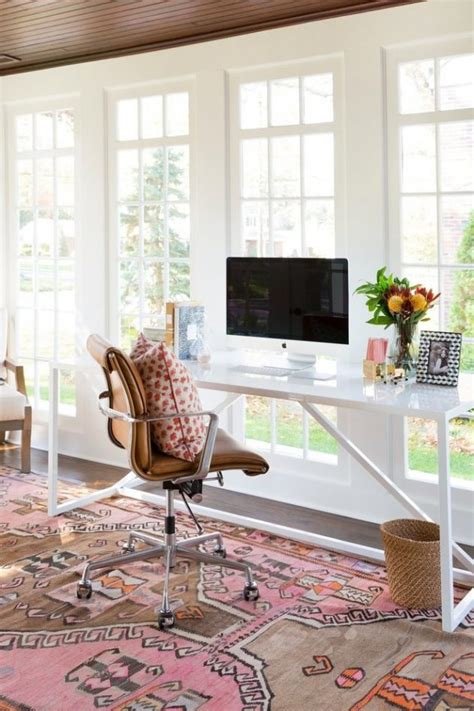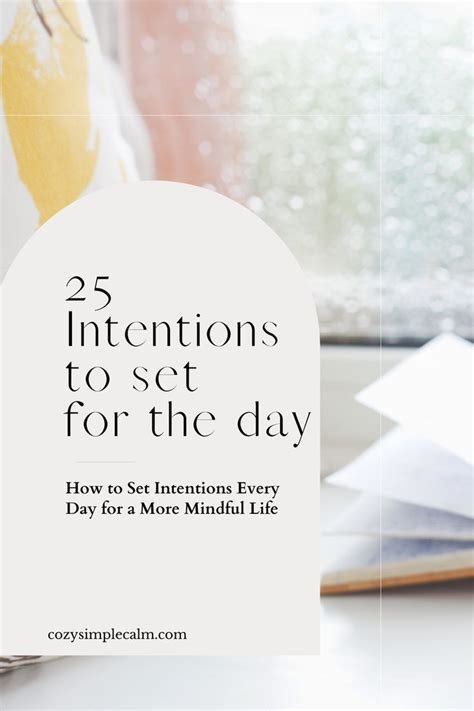Creating an inspiring home office is crucial for enhancing productivity and ensuring a successful work-from-home experience. This article delves into the significance of a productive workspace, outlining how to create an ideal work environment that fosters focus and efficiency. It highlights essential elements necessary for a functional home office, offers tips for optimizing your setup, and discusses the importance of incorporating technology effectively. Additionally, the article explores the psychological benefits of having a personal workspace and points out common design mistakes to avoid. By following actionable takeaways, readers can transform their home office into a space that not only boosts productivity but also promotes well-being and creativity. Overall, creating an inspiring home office can lead to increased motivation and success in your professional endeavors.
Understanding The Importance Of A Productive Home Office
Establishing a conducive workspace is essential for anyone who wishes to embrace the concept of remote work. The first step involves creating an environment that not only inspires productivity but also enhances focus and creativity. A well-designed home office can significantly impact the quality of work, personal satisfaction, and overall efficiency. By distinguishing your work area from your living space, you can cultivate a mindset that is geared towards productivity.
Moreover, the physical layout of your home office plays a critical role in your day-to-day operations. It’s important to consider elements such as lighting, furniture, and organizational tools that align with your work style. This tailored environment can lead to increased motivation and lower stress levels, allowing you to tackle tasks effectively. Not only does this setup provide a dedicated space for work, but it also allows for clearer boundaries between personal and professional time.
- Improved focus and concentration
- Enhanced organization and efficiency
- Reduction in stress and distractions
- Clear boundaries between work and personal life
- Customized environment based on individual preferences
- Increased motivation and job satisfaction
- Better time management and discipline
In essence, creating an effective home office setup is about more than just aesthetics—it’s about functionality as well. A thoughtfully arranged workspace not only helps optimize productivity but also contributes to a more balanced work-life harmony. As you develop your ideal home office, keeping these principles in mind will ensure a greater likelihood of both professional success and personal well-being.
Creating An Ideal Work Environment For Success
Creating an inspiring home office is essential for enhancing productivity and facilitating a balanced work-life dynamic. A well-designed workspace not only helps to concentrate more effectively but also significantly contributes to overall job satisfaction. The ambiance of your home office plays a vital role in your ability to work efficiently and creatively. By paying attention to the various elements that contribute to an optimal work environment, you can set yourself up for success in your professional endeavors.
One of the foundational elements of a productive home office is selecting the right furniture and layout. You want to ensure that the physical aspects of your workspace promote comfort, reduce distractions, and encourage focus. Additionally, incorporating personal touches can create an environment that feels both professional and inviting. As you make design choices, consider how they will impact your daily workflow.
- Steps To Creating Your Home Office
- Determine your workspace needs and preferences.
- Choose an appropriate location in your home.
- Invest in a high-quality desk and ergonomic chair.
- Ensure sufficient lighting to enhance visibility.
- Add organizational tools for efficiency.
- Incorporate personal decor for motivation.
- Seek feedback and adjust as needed.
As you brainstorm ideas for your office layout, consider how each component can complement your overall design theme. It might be beneficial to start with the following key areas of focus:
Choosing The Right Desk
In the realm of home office setup, choosing the right desk is paramount. The desk should not only accommodate your work materials but also provide a comfortable height and surface area for various activities. If you frequently work on a computer, ensure there is ample space for your screen, keyboard, and any additional equipment. The ideal desk should reflect your personal style while serving practical functions that enhance productivity.
Lighting Considerations
Good lighting is crucial in a home office, as it can significantly impact your mood and energy levels throughout the day. Strive for a combination of natural and artificial light sources to create a well-lit environment. Position your desk near a window if possible, allowing natural daylight to flow in. Additionally, invest in quality task lighting to minimize eye strain during long work hours while maintaining a warm atmosphere in your workspace.
Organizing Your Space
Effective organization is a vital component of any productive workspace. A well-organized home office removes clutter and allows you to focus solely on your tasks. Use shelves, filing cabinets, and desktop organizers to keep materials neatly stored and easily accessible. Implement a system for managing digital files as well, ensuring that both your physical and virtual spaces reflect order and efficiency.
Essential Elements Of A Functional Home Office
When creating an efficient home office, it is crucial to focus on elements that enhance productivity and promote a positive work environment. A functional home office should cater to your specific needs, allowing for both comfort and efficiency in daily tasks. By carefully selecting the right tools, layout, and design elements, you can create a workspace that minimizes distractions and encourages focus.
Incorporating the right features into your office layout can make all the difference. Consider a layout that promotes easy movement and access to essential tools and resources. Additionally, lighting plays a vital role in the overall atmosphere of your workspace; it should be bright yet comfortable. Investing in ergonomic furniture will also support your health and improve your concentration during long working hours.
- Features To Include In Your Office Layout
- Ergonomic chair and desk
- Appropriate lighting fixtures
- Cable management solutions
- Storage solutions (shelves, filing cabinets)
- Tools for organization (whiteboards, planners)
- Personal decor that inspires creativity
- Quality audio/visual equipment
Remember to prioritize your comfort and functionality while creating an inviting atmosphere. Personal touches such as artwork, plants, or motivational quotes can help foster inspiration and keep your energy levels high. Furthermore, consider design elements that reflect your personality, as this can enhance your overall satisfaction in your workspace.
Creating a workspace that resonates with you can profoundly impact your motivation and productivity levels.
Ultimately, the essence of a functional home office lies in its ability to support your workflow while also being a place where you feel comfortable and inspired to work. Evaluate your individual requirements diligently to tailor your space accordingly. With the right commitments and strategies, your home office can become a powerful tool in your journey toward professional success.
Tips For Optimizing Your Home Office Setup
Creating an effective home office involves more than just having a desk and a chair. To truly enhance productivity, it’s essential to focus on *creating an* environment that fosters concentration and creativity. This includes selecting the right tools, organizing your workspace, and implementing strategies that minimize distractions. Understanding how these elements interplay can lead to significant improvements in both work output and overall job satisfaction.
One crucial aspect to consider when optimizing your home office is ergonomics. Investing in ergonomic furniture can prevent physical discomfort and promote better posture, allowing you to work efficiently for longer periods. Furthermore, maintaining an ample amount of natural light can enhance your mood and energy levels. To help you structure your efforts, here are some effective approaches:
Recommendations For Better Productivity
- Designate a specific work area free from distractions.
- Invest in ergonomic furniture to ensure comfort.
- Utilize adequate lighting to create a pleasant atmosphere.
- Minimize clutter by keeping only essential items on your desk.
- Incorporate plants or artwork to inspire creativity.
- Set up a consistent daily routine to enhance focus.
- Utilize technology tools that streamline workflow.
By integrating these recommendations into your workspace, you will be positioned to maximize your productivity effectively. Remember that *creating an* inspiring work environment is an ongoing process. Regularly assess your setup and make necessary adjustments to ensure it continues to meet your needs as your work habits evolve. This adaptability not only fosters a more enjoyable workspace but also contributes to long-term success.
Incorporating small changes in your home office can yield remarkable results in your productivity levels.
In conclusion, optimizing your home office setup is key to achieving a balance between comfort and efficiency. By focusing on important factors such as furniture selection, lighting, and organization, you can create an inspiring space that aligns with your work goals. Every adjustment made will lead to a more functional workspace that not only encourages productivity but also promotes a positive work-life balance.
Incorporating Technology Into Your Home Office
When it comes to creating an inspiring home office, technology plays a pivotal role in enhancing your productivity and overall work experience. Utilizing the right tools can streamline your daily tasks, allowing for better time management and efficiency. With the rapid advancement of tech solutions, professionals can create a workspace that is not only functional but also stylish.
Integrating smart technology can transform the way you work. For instance, implementing cloud-based solutions allows you to collaborate with team members in real-time, no matter where they are located. Additionally, using project management software can help visualize tasks and deadlines, ensuring that everything is on track. Embracing these tools elevates your workspace, promoting a sense of organization and focus.
- Tech Tools To Enhance Productivity
- Wireless noise-canceling headphones for focused audio
- Cloud storage solutions for secure file access
- Virtual meeting platforms for seamless communication
- Task management apps to organize projects
- Smart lighting systems to reduce eye strain
- Ergonomic devices to improve comfort
- Time-tracking software to monitor productivity
Furthermore, it’s beneficial to consider automation in your daily operations. Tools like scheduling software can take the hassle out of organizing meetings, while automated reminders can keep you accountable and on task. By simplifying routine tasks through technology, you’re free to focus on the core aspects of your work, ultimately leading to greater job satisfaction.
Understanding The Psychological Benefits Of A Personal Workspace
Creating an inspiring home office goes beyond aesthetics; it plays a vital role in enhancing mental well-being and productivity. A dedicated workspace can profoundly impact your motivation levels and overall work quality. By having a designated area that is solely for work, you train your brain to associate that space with productivity, leading to improved focus and efficiency. This psychological cue can help separate work from leisure, reducing stress and fostering a sense of balance in your daily routine.
Another significant benefit of a personal workspace is the ability it gives you to customize your environment. Tailoring your office to suit your preferences can increase your comfort and satisfaction levels, ultimately leading to greater productivity. Consider the lighting, furniture, and colors that inspire you. When you invest time in creating a space that resonates with you, it can significantly enhance your mood and motivation to work. A personalized space encourages creativity, allowing new ideas to flourish.
- Advantages Of A Dedicated Office Area
- Improved focus and concentration
- Enhanced motivation and creativity
- Clear separation of work and personal life
- Reduced distractions and interruptions
- Increased organization and efficiency
- Opportunity for personalization and comfort
Furthermore, having a personal workspace contributes to your mental health, as it can serve as a sanctuary where you feel in control. This not only boosts confidence but also enhances your overall job satisfaction. The act of stepping into your office can signal your mind that it’s time to work, helping you adopt a more disciplined work ethic. As you create an inspiring home office, remember to prioritize your psychological needs, as they can have a lasting impact on both your work output and quality of life.
Creating a serene and well-designed workspace is not just about aesthetics; it’s about establishing a mental framework for success and mental well-being.
In conclusion, the psychological benefits of a personal workspace are multifaceted. By understanding the importance of creating an inspiring environment, you empower yourself to work more effectively and enjoyably. Take the time to craft a workspace that truly reflects your needs and preferences. This investment in your mental and professional health can pave the way for elevated productivity and a more fulfilling work experience.
Common Mistakes To Avoid In Home Office Design
When creating an inspiring home office, it’s essential to recognize the common pitfalls that can severely affect your productivity. Many individuals overlook the importance of thoughtful design in their workspaces, leading to discomfort and distractions. Addressing these mistakes can transform your home office into a hub of creativity and efficiency, punctuating the difference with just a few adjustments.
One of the primary mistakes people make is neglecting ergonomic considerations. Poor seating, inadequate desk height, and inefficient layout can lead to fatigue and decreased focus. It’s crucial to invest in a good chair and desk that promote healthy posture and comfort throughout long working hours. Moreover, lighting plays a crucial role—using sharp, harsh artificial light can strain your eyes, whereas a well-lit room enhances your mood and focus.
“Your workspace should inspire you, not drain you. Make it comfortable, functional, and aesthetically pleasing.”
In addition to ergonomics and lighting, layout and organization are areas often overlooked in home office design. A cluttered workspace can be distracting and overwhelming. By implementing an organized system, you can minimize distractions and optimize your workflow. Here are some important missteps that can hinder productivity:
- Ignoring ergonomic furniture choices.
- Choosing poor lighting options.
- Not creating an organized storage system.
- Overcrowding the workspace with unnecessary items.
- Failing to personalize the space for motivation.
- Neglecting to incorporate breaks into the daily routine.
- Underestimating the impact of technology integration.
Lastly, it is vital to personalize your workspace to inspire and motivate you. Many neglect to infuse elements of their personality into their home office, which can make it feel uninviting. Surrounding yourself with inspiring art, plants, or personal mementos can invigorate your space. As you embark on creating an effective home office, avoid these mistakes to ensure that your workspace serves as a sanctuary for productivity and creativity.
Actionable Takeaways For A Successful Home Office Experience
When it comes to Creating an inspiring home office, it’s crucial to focus on actionable steps that can lead to noticeable improvements in productivity. By establishing a well-organized workspace, you cultivate an environment that enhances focus and motivation. Small modifications in your daily routine and office layout can make a significant difference in your work experience. Understanding these actionable takeaways can be your key to achieving a more efficient work-from-home routine.
One of the fundamental aspects of professional efficacy is establishing clear boundaries between work and personal life. When Creating an effective home office, it’s essential to designate a specific area solely for work tasks. This separation not only helps maintain focus during working hours but also fosters a clear transition when it’s time to unplug and unwind. Your workspace should serve as a powerful reminder of your professional goals and objectives, stimulating your productivity.
Steps To Sustain Your Productivity
- Set a definitive start and end time for your workday.
- Minimize distractions by silencing notifications on your devices.
- Create an organized workspace that encourages creativity.
- Incorporate comfortable furniture to support long hours of work.
- Utilize productivity tools and apps to manage your tasks efficiently.
- Take regular breaks to rejuvenate your mind and body.
- Regularly reassess your needs and space to ensure it meets your demands.
Additionally, creating a visually appealing workspace can also enhance your productivity. Consider adding personal touches that inspire creativity and motivation, such as wall art or plants. The layout of your home office should promote a sense of well-being, making it a place where you enjoy spending your time. Lighting, colors, and even the choice of desk items can have a profound effect on your mood and productivity levels. Remember, Creating an inviting atmosphere ultimately fosters sustained motivation and a heightened sense of focus.
“A well-designed workspace is not just a place to work; it’s an environment that inspires you to achieve your best.”
By implementing these actionable takeaways and continually refining your workspace, you are on your way to mastering the art of working from home. Pay attention to how these simple changes affect your productivity, and don’t hesitate to make adjustments as needed. Embracing the right mindset and tools will enable you to thrive within your home office, leading to greater satisfaction and success in your professional endeavors.
Frequently Asked Questions
What are the benefits of having a dedicated home office space?
A dedicated home office space fosters better focus and professionalism, separates work from personal life, and helps in creating a structured routine, ultimately boosting productivity.
How can I optimize my workspace for increased productivity?
To optimize your workspace, consider ergonomic furniture, adequate lighting, minimal clutter, and personal touches that inspire creativity and motivation.
What essential elements should I include in my home office?
Essential elements for a functional home office include a comfortable chair, a sturdy desk, proper lighting, storage solutions, and necessary technology like a computer and strong internet connection.
What role does technology play in a home office setup?
Technology enhances productivity by offering tools for communication, collaboration, organization, and task management, making work more efficient and streamlined.
How does my home office design affect my mental well-being?
A well-designed home office can reduce stress, enhance focus, and improve overall job satisfaction, leading to better mental well-being and a positive mindset towards work.
What are some common mistakes to avoid when designing a home office?
Common mistakes include neglecting proper ergonomics, overcrowding the space, poor lighting, inadequate storage, and failing to personalize the space to make it inspiring.
How can I incorporate personal elements into my home office?
Incorporate personal elements by adding artwork, plants, favorite quotes, or any decor that resonates with you and motivates you, making the office a space that reflects your personality.
What are some actionable takeaways for creating a successful home office?
Actionable takeaways include defining a designated workspace, investing in ergonomic furniture, minimizing distractions, using technology wisely, and regularly reassessing your setup for improvements.









